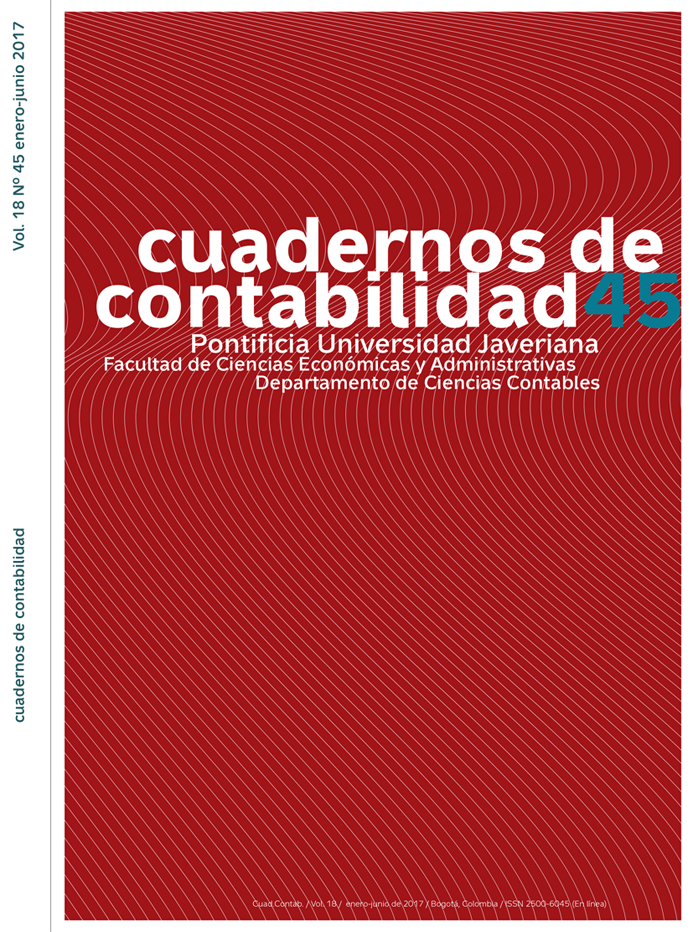Resumen
Comprender el fenómeno del fraude desde la perspectiva del defraudador ha ocupado el interés de diversas disciplinas como la criminología, la contaduría, la auditoría y la psicología, entre otras. Aunque muchas de estas disciplinas parten de la teoría del triángulo del fraude para explicarlo con las tres variables fundamentales —presión, oportunidad y racionalización—, nosotros consideramos, en el presente documento, que es necesario incorporar tres variables, para la comprensión holística del problema del fraude: el conocimiento, la motivación y la innovación; al tiempo se desarrolla una reflexión sobre el fenómeno del fraude corporativo desde una perspectiva psicológica, que incluye la percepción, la emoción y la acción como elementos constitutivos de la motivación y el pensamiento creativo en la innovación.
Cressey, D. R. (1961). the Prison: Studies in Institutional Organization and Change. New York: Holt, Rinehart & Winston.
Galvis-Castañeda, I. E. (2008). Análisis conductual forense en un caso de delito financiero. Cuadernos de Contabilidad, 9(25), 465-486. Disponible en: http://revistas.javeriana.edu.co/index.php/cuacont/article/view/3233/2457
Golden, T. W., Skalak, S. L., Clayton, M. M., & Pill, Jessica S. (2006). A Guide to Forensic Accounting Investigation.
Hoboken, New Jersey: Pricewaterhouse Coopers, John Wiley & Sons.
Kohlberg, L. (1981). the Philosophy of Moral Development Moral Stages and the Idea of Justice. New York: Harper & Row.
Solano-Avella, D. R. (2014). Los delitos financieros en el caso la Polar Chile. Tesis de grado, Facultad de Ciencias Económicas Administrativas y Contables, Universidad Javeriana, Bogotá. Disponible en: https://repository.javeriana.edu.co/bitstream/handle/10554/14838/SolanoAvellaDiegoRicardo2014.pdf?sequence=1
Villegas de Posada, M. C. (2008). La acción moral: explicaciones filosóficas y contrastaciones psicológicas. Bogotá: Universidad de los Andes, Facultad de Ciencias Sociales, Departamento de Psicología, Centro de Estudios Socioculturales e Internacionales, CESO, Ediciones Uniandes.
Wolfe, D. T. & Hermanson, D. R. (2004). the Fraud Diamond: Considering the Four Elements of Fraud. the CPA Journal, 74(12), 38-42. Disponible en: http://wweb.uta.edu/faculty/subraman/EMBA-FTW2009/Articles/Fraud%20Diamond%20Four%20Elements.CPAJ2004.pdf
El aval sobre la intervención de la obra (revisión, corrección de estilo, traducción, diagramación) y su posterior divulgación se otorga mediante una licencia de uso y no a través de una cesión de derechos, lo que representa que la revista y la Pontificia Universidad Javeriana se eximen de cualquier responsabilidad que se pueda derivar de una mala práctica ética por parte de los autores. En consecuencia de la protección brindada por la licencia de uso, la revista no se encuentra en la obligación de publicar retractaciones o modificar la información ya publicada, a no ser que la errata surja del proceso de gestión editorial. La publicación de contenidos en esta revista no representa regalías para los contribuyentes.



